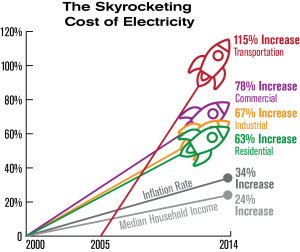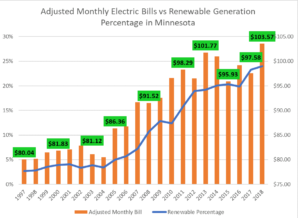Living organisms acquire energy from their food. They require energy to complete their complex and metabolic pathways. Organisms would not be able to gain protein, lipids, nucleic acids, and carbohydrates without constant Reliant Energy Reviews .
Organisms obtain energy in a Food Web

The Food web or Food Cycle is the graphical representation of different organisms of who eats whom. It implies how energy flows directionally from one level to another. It also shows how organisms adapt it, utilize it and what remains for the next organism in the Foodweb.
Energy is gained by living things in three different ways.
Photosynthesis: Photosynthetic organisms’ also known as photosynthetic autotrophs are the organism that uses sunlight as an energy source to prepare their food. For example plants, algae, and photosynthetic bacteria. They are the largest energy source in the world’s ecosystem. They utilize solar energy and convert it into chemical energy in the form of ATP. It is used to synthesize complex organic molecules like glucose.
Chemosynthesis: Chemosynthetic organisms’ also known as chemosynthetic autotrophs are the organism that mainly found where sunlight is not available like in dark caves or hydrothermal vents at the bottom of the ocean. For example, Swimming Shrimp, squat lobster, and hundreds of vent mussels. They use Hydrogen Sulfide (H2S) as a source of chemical energy. It is used to synthesize complex organic molecules like glucose and in turn, contribute energy to the rest of the ecosystem.
Consumption and digestion: Heterotrophs are divided into two: Herbivores and carnivores. Herbivores are the organism that eats only plants like a cow. Carnivores are animals who consume autotrophs and other heterotrophs like lions. Heterotrophs break down complex organic compounds like carbon and hydrogen atoms into simpler compounds like carbon dioxide and water. Unlike the previous two, they were not able to make their own food. They have to depend on autotrophs or other heterotrophs for food.
Rate of transformation of Energy between Trophic levels
In an ecosystem, every living being is depending on each other for their survival. When an organism consumes another organism, a large amount of energy is lost in the transformation. The main reason for the loss of energy is the second law of thermodynamics, which states that as energy is transfer or transformed more, more of it is wasted, and there is a tendency to degenerate into a more disordered state. In the biological process, a great deal of energy is lost, as the metabolic heat of the organism of one trophic level has been consumed by the next trophic level.
In a food chain, only 10% of the energy is passing onto the next trophic level. In addition, the rest pass through the food chain in many ways.
- It is utilized as heat energy
- It is made use of a life process like movement
- The remaining energy is transferred to the decomposer.
Biomass gets smaller as less energy has transmitted at each trophic level. As a result, there is less trophic level in food chains. The measurement of energy efficiency between two trophic levels is termed Trophic level Transfer Efficiency (TLTE). It has defined by the formula
TLTE= (Transfer of energy to the next level)/ (Energy receive during transformation) ×100


